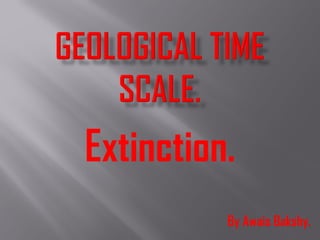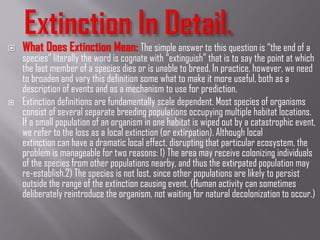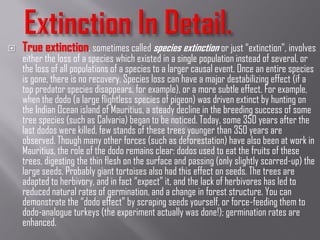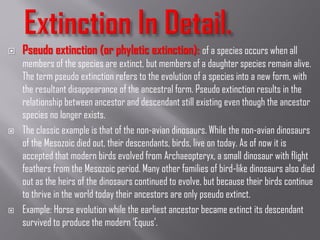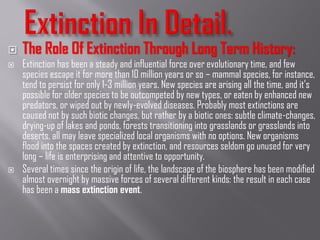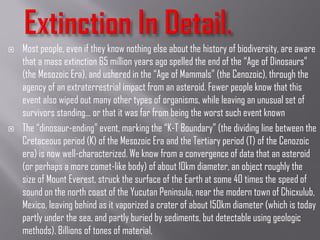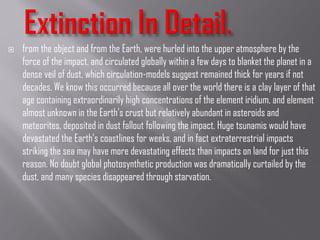Extinction can occur at the population level, called local extinction, or at the species level, called true extinction. True extinction involves the loss of all populations of a species globally. Mass extinctions have occurred throughout history due to various causes like asteroid impacts, volcanic activity, climate change, and more recently, human activity. Currently most extinctions are caused by human interference with habitats and ecosystems. International organizations monitor extinction rates and endangered species to try and control further biodiversity loss.
